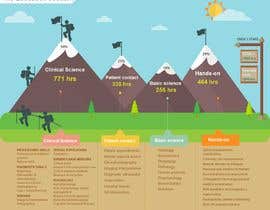Taking A Look At The Science Of Cold Laser Therapy
Taking A Look At The Science Of Cold Laser Therapy
Blog Article
Article Writer-Tate Albrektsen
When taking into consideration alternate therapies, cold laser treatment sticks out due to its special approach to recovery. By utilizing cold laser therapy smoking of light, it targets cellular features and promotes recovery in a non-invasive manner. This method not just improves ATP production but additionally aids in reducing swelling and pain. As research remains to unravel, the effects for recovery and discomfort monitoring could be substantial. What does this mean for future treatment alternatives?
The Devices of Cold Laser Treatment
Cold laser treatment, also called low-level laser therapy (LLLT), functions by promoting mobile feature with the application of certain wavelengths of light.
When the laser light permeates your skin, it communicates with the mitochondria in your cells, raising ATP manufacturing. This boost in ATP stimulates your cells, promoting healing and regeneration.
The light additionally influences cell membrane layers, enhancing their leaks in the structure and promoting nutrient absorption while removing toxins. Furthermore, cold laser treatment activates the launch of endorphins and decreases inflammation, helping your body respond more effectively to injury.
You'll experience enhanced blood flow as the treatment stimulates capillary development, making sure that oxygen and nutrients get to broken cells extra effectively.
Understanding these devices can help you appreciate its potential in advertising healing.
Potential Advantages of Cold Laser Therapy
When taking into consideration choices for pain relief and healing, you may find cold laser therapy to be an enticing alternative. This non-invasive technique can help reduce inflammation, relieve pain, and advertise cells repair work.
Lots of people report quicker recovery times from injuries and surgeries after going through cold laser therapy. It's especially helpful for problems like arthritis, tendonitis, and muscular tissue stress.
https://dark-circle-laser-treatme65532.spintheblog.com/34746942/reveal-how-cold-laser-treatment-may-change-your-pain-alleviation-and-recovery-journey-and-learn-the-unexpected-advantages-it-brings may also appreciate that it has minimal side effects contrasted to drugs. Additionally, cold laser treatment can boost circulation, which aids in delivering nutrients and oxygen to damaged areas.
Current Research and Scientific Applications
As passion in cold laser treatment grows, scientists are exploring its various applications and performance in professional settings. You'll discover research studies exploring its role in pain administration, wound healing, and reducing swelling.
In physical treatment, professionals make use of cold laser therapy to enhance recovery in sporting activities injuries, while dental practitioners are finding it useful for treating oral pain and gum disorders. Ongoing laser treatment to give up smoking are analyzing its capacity in treating conditions like joint inflammation and neuropathy.
These studies intend to establish standardized procedures and does, making sure safety and security and efficiency. As even more proof emerges, you might see cold laser treatment becoming a staple in both recovery and pain administration, offering people a non-invasive option that enhances typical therapies.
Final thought
In conclusion, cold laser treatment uses an encouraging approach to healing by harnessing particular wavelengths of light to improve mobile functions and advertise recuperation. With benefits like boosted blood circulation, reduced inflammation, and discomfort relief, it's ending up being a beneficial choice for numerous conditions. As research continues to develop standardized protocols, you can eagerly anticipate greater approval of this non-invasive treatment in rehabilitation methods and pain monitoring approaches, making it a possible game-changer for several patients.
